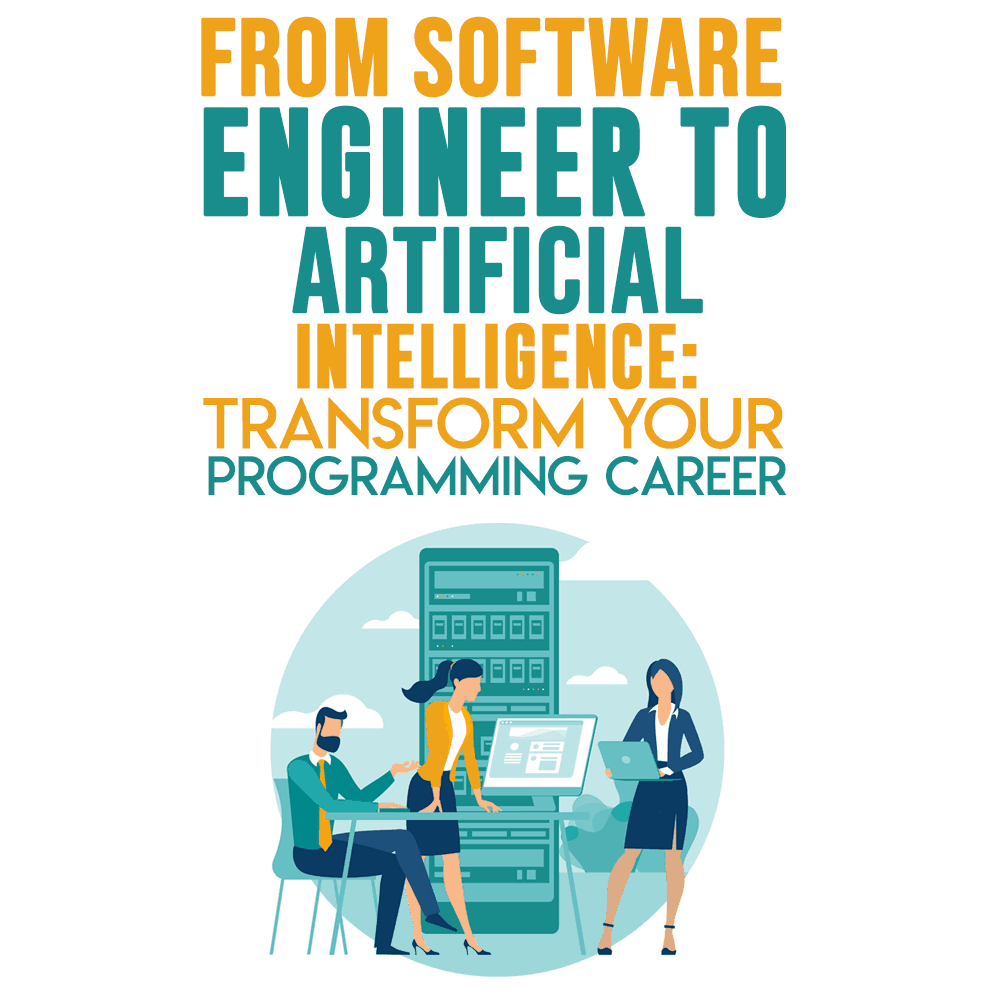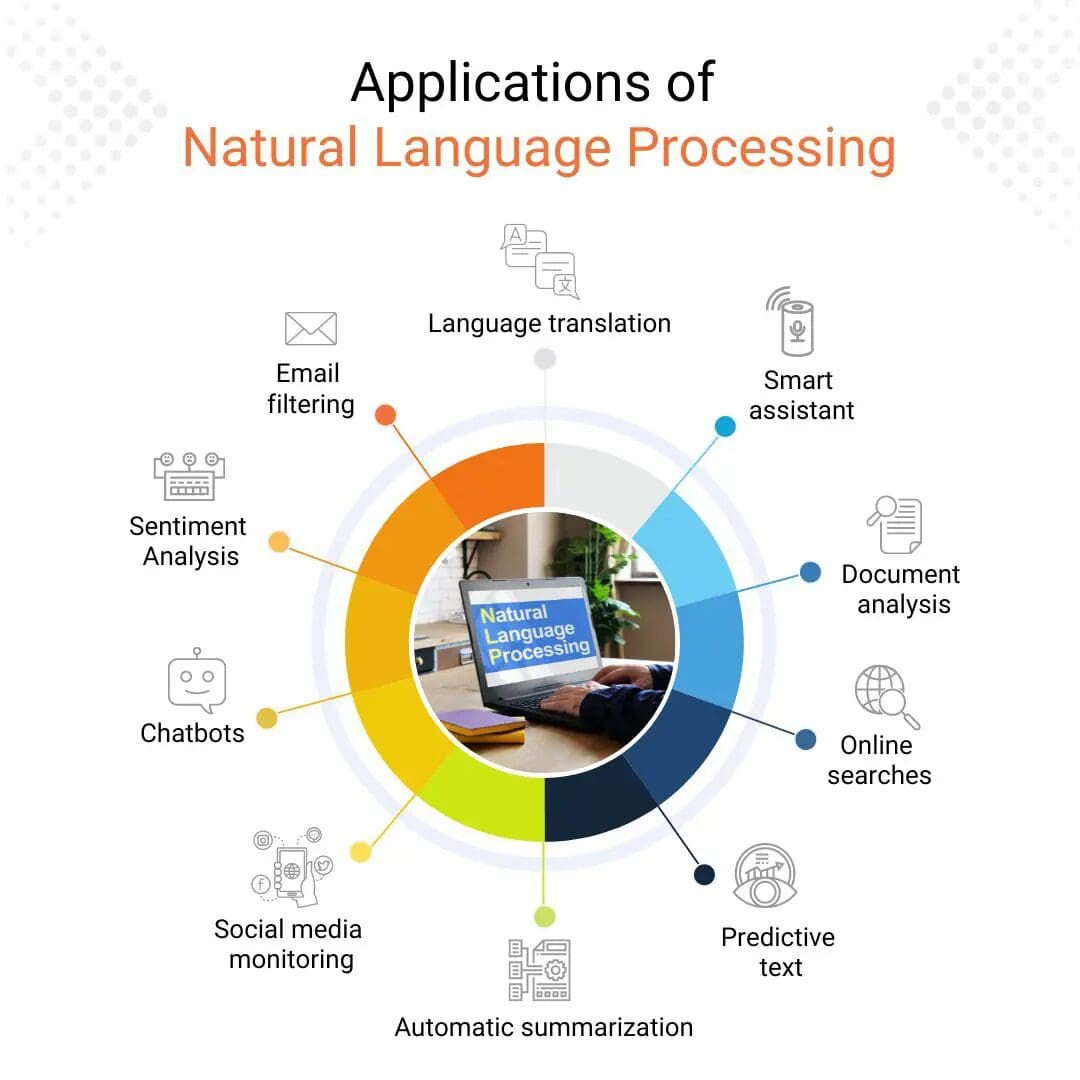All Categories
Featured
Table of Contents
- – Software Engineering In The Age Of Ai - An Ove...
- – The Buzz on How To Become A Machine Learning E...
- – Little Known Questions About How To Become A ...
- – How To Become A Machine Learning Engineer & G...
- – Best Online Software Engineering Courses And...
- – All About How To Become A Machine Learning E...
You most likely know Santiago from his Twitter. On Twitter, every day, he shares a lot of useful aspects of device discovering. Many thanks, Santiago, for joining us today. Welcome. (2:39) Santiago: Thank you for welcoming me. (3:16) Alexey: Before we enter into our major subject of moving from software application design to artificial intelligence, maybe we can begin with your background.
I went to college, obtained a computer science level, and I started building software program. Back after that, I had no idea about device learning.
I recognize you have actually been making use of the term "transitioning from software application engineering to device discovering". I like the term "including in my capability the artificial intelligence abilities" a lot more due to the fact that I believe if you're a software program engineer, you are already giving a great deal of worth. By incorporating artificial intelligence currently, you're increasing the effect that you can carry the industry.
So that's what I would certainly do. Alexey: This comes back to among your tweets or possibly it was from your course when you contrast 2 approaches to learning. One strategy is the trouble based method, which you simply spoke about. You find an issue. In this instance, it was some trouble from Kaggle concerning this Titanic dataset, and you simply discover how to solve this trouble using a specific device, like decision trees from SciKit Learn.
Software Engineering In The Age Of Ai - An Overview
You first learn mathematics, or direct algebra, calculus. When you understand the math, you go to maker learning theory and you discover the theory. 4 years later on, you ultimately come to applications, "Okay, how do I use all these 4 years of mathematics to address this Titanic problem?" Right? In the former, you kind of conserve yourself some time, I think.
If I have an electrical outlet right here that I need replacing, I don't wish to most likely to college, spend four years understanding the mathematics behind electrical power and the physics and all of that, simply to transform an electrical outlet. I prefer to start with the outlet and discover a YouTube video clip that aids me go with the problem.
Poor example. You get the concept? (27:22) Santiago: I truly like the concept of beginning with a trouble, attempting to throw away what I know as much as that trouble and recognize why it doesn't work. Then get the tools that I need to solve that issue and begin digging deeper and deeper and deeper from that factor on.
Alexey: Perhaps we can talk a little bit concerning finding out sources. You stated in Kaggle there is an introduction tutorial, where you can get and find out exactly how to make choice trees.
The only requirement for that training course is that you recognize a bit of Python. If you're a programmer, that's a wonderful base. (38:48) Santiago: If you're not a programmer, after that I do have a pin on my Twitter account. If you most likely to my profile, the tweet that's going to get on the top, the one that claims "pinned tweet".
The Buzz on How To Become A Machine Learning Engineer - Uc Riverside

Even if you're not a developer, you can start with Python and function your way to even more artificial intelligence. This roadmap is concentrated on Coursera, which is a system that I really, really like. You can audit all of the programs free of charge or you can pay for the Coursera registration to get certifications if you want to.
Alexey: This comes back to one of your tweets or maybe it was from your program when you compare two techniques to learning. In this situation, it was some trouble from Kaggle about this Titanic dataset, and you just learn exactly how to solve this trouble utilizing a specific device, like choice trees from SciKit Learn.

You initially find out math, or direct algebra, calculus. When you recognize the math, you go to equipment knowing theory and you learn the concept.
If I have an electric outlet right here that I require replacing, I do not desire to go to college, invest four years recognizing the math behind electrical power and the physics and all of that, simply to transform an outlet. I would certainly rather start with the electrical outlet and discover a YouTube video clip that assists me experience the issue.
Poor analogy. Yet you get the idea, right? (27:22) Santiago: I truly like the concept of starting with an issue, attempting to toss out what I understand approximately that issue and understand why it doesn't work. After that order the tools that I need to resolve that problem and start digging much deeper and deeper and much deeper from that point on.
So that's what I typically recommend. Alexey: Maybe we can chat a bit regarding finding out sources. You pointed out in Kaggle there is an introduction tutorial, where you can obtain and discover how to choose trees. At the start, before we started this interview, you stated a pair of publications.
Little Known Questions About How To Become A Machine Learning Engineer (With Skills).
The only need for that course is that you understand a bit of Python. If you're a developer, that's a fantastic beginning point. (38:48) Santiago: If you're not a designer, then I do have a pin on my Twitter account. If you go to my profile, the tweet that's going to get on the top, the one that claims "pinned tweet".
Also if you're not a programmer, you can begin with Python and function your method to more artificial intelligence. This roadmap is concentrated on Coursera, which is a system that I truly, actually like. You can investigate all of the courses free of cost or you can pay for the Coursera membership to get certificates if you intend to.
How To Become A Machine Learning Engineer & Get Hired ... Fundamentals Explained
That's what I would do. Alexey: This returns to one of your tweets or perhaps it was from your training course when you contrast 2 techniques to discovering. One method is the trouble based technique, which you just spoke about. You locate an issue. In this instance, it was some issue from Kaggle regarding this Titanic dataset, and you simply find out how to fix this trouble making use of a particular device, like choice trees from SciKit Learn.
You first find out math, or linear algebra, calculus. When you recognize the mathematics, you go to device learning theory and you learn the concept.
If I have an electrical outlet below that I need changing, I don't intend to most likely to university, invest 4 years recognizing the mathematics behind electricity and the physics and all of that, simply to transform an outlet. I prefer to begin with the outlet and discover a YouTube video clip that helps me undergo the problem.
Santiago: I actually like the idea of starting with a trouble, attempting to toss out what I recognize up to that trouble and understand why it doesn't function. Order the devices that I require to resolve that problem and begin digging deeper and deeper and deeper from that point on.
To ensure that's what I usually recommend. Alexey: Perhaps we can speak a little bit concerning learning sources. You pointed out in Kaggle there is an introduction tutorial, where you can get and find out how to choose trees. At the start, before we started this interview, you stated a couple of publications too.
Best Online Software Engineering Courses And Programs for Dummies
The only requirement for that program is that you understand a bit of Python. If you're a designer, that's a fantastic beginning point. (38:48) Santiago: If you're not a programmer, then I do have a pin on my Twitter account. If you go to my account, the tweet that's mosting likely to be on the top, the one that says "pinned tweet".
Also if you're not a designer, you can begin with Python and function your means to even more artificial intelligence. This roadmap is concentrated on Coursera, which is a system that I really, truly like. You can investigate all of the programs completely free or you can spend for the Coursera subscription to get certificates if you wish to.
To make sure that's what I would do. Alexey: This comes back to among your tweets or maybe it was from your program when you contrast 2 techniques to knowing. One technique is the trouble based technique, which you simply discussed. You find an issue. In this situation, it was some trouble from Kaggle about this Titanic dataset, and you simply learn just how to solve this issue making use of a specific device, like decision trees from SciKit Learn.
You first learn mathematics, or linear algebra, calculus. When you understand the math, you go to machine learning theory and you learn the concept.
All About How To Become A Machine Learning Engineer
If I have an electric outlet below that I require changing, I don't want to go to university, spend four years comprehending the math behind electrical power and the physics and all of that, just to change an outlet. I prefer to begin with the outlet and find a YouTube video clip that helps me undergo the problem.
Negative example. But you get the idea, right? (27:22) Santiago: I really like the concept of beginning with a problem, attempting to toss out what I understand approximately that trouble and understand why it does not work. Order the devices that I require to resolve that problem and begin excavating much deeper and deeper and much deeper from that factor on.

That's what I usually advise. Alexey: Possibly we can chat a little bit about discovering sources. You discussed in Kaggle there is an intro tutorial, where you can get and find out just how to choose trees. At the start, before we began this interview, you pointed out a number of publications as well.
The only need for that course is that you know a little bit of Python. If you go to my profile, the tweet that's going to be on the top, the one that states "pinned tweet".
Also if you're not a designer, you can start with Python and work your method to more artificial intelligence. This roadmap is focused on Coursera, which is a platform that I actually, actually like. You can investigate all of the programs for totally free or you can pay for the Coursera registration to obtain certifications if you intend to.
Table of Contents
- – Software Engineering In The Age Of Ai - An Ove...
- – The Buzz on How To Become A Machine Learning E...
- – Little Known Questions About How To Become A ...
- – How To Become A Machine Learning Engineer & G...
- – Best Online Software Engineering Courses And...
- – All About How To Become A Machine Learning E...
Latest Posts
The Ultimate Guide To Data Science Interview Preparation
10 Behavioral Interview Questions Every Software Engineer Should Prepare For
How To Negotiate A Software Engineer Salary After A Faang Offer
More
Latest Posts
The Ultimate Guide To Data Science Interview Preparation
10 Behavioral Interview Questions Every Software Engineer Should Prepare For
How To Negotiate A Software Engineer Salary After A Faang Offer